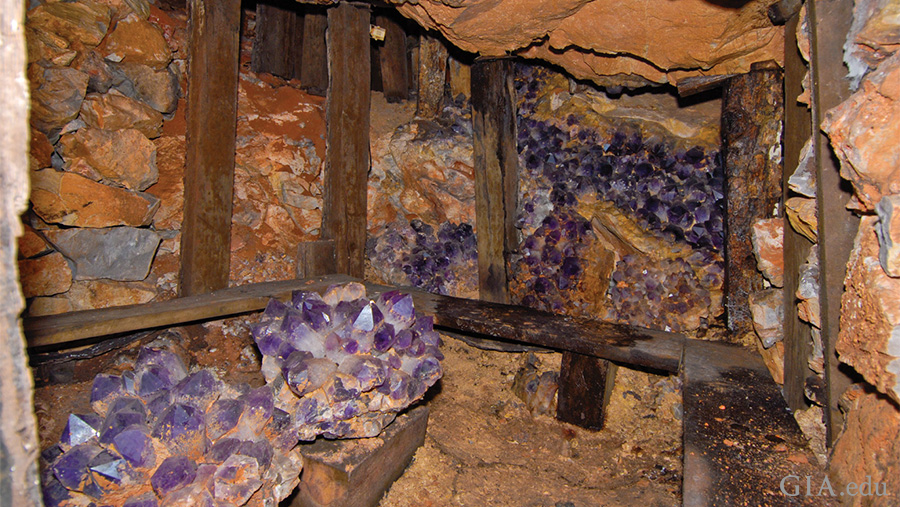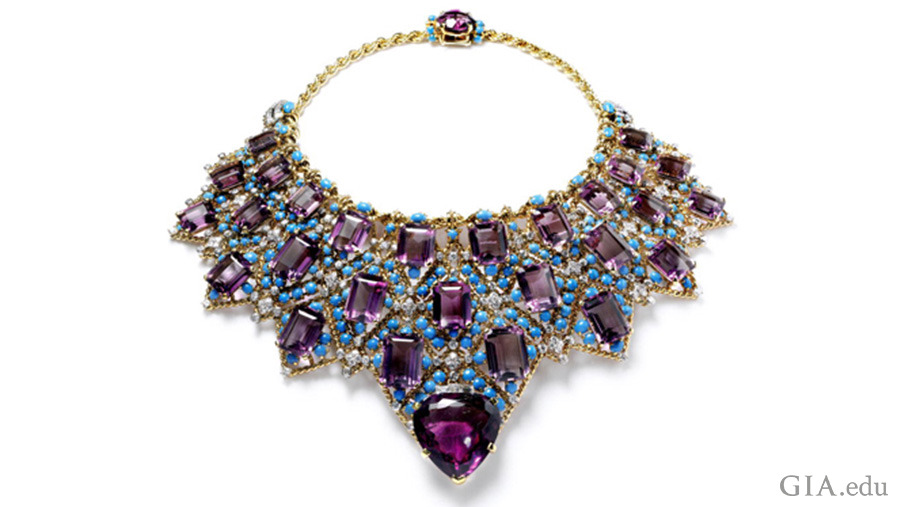Welcome back to the Diamonds Hatton Garden blog where we bring you the latest from our Hatton Garden jewellers. February, as the season begins to change and Spring begins its much welcome approach, is an exciting time of year. To celebrate this important month, we continue our on-going series of monthly birthstones with the magnificent amethyst.
If you were born in February, your birthstone is amethyst – the purple variety of quartz that has captivated mankind for millennia. Its lilac to deep purple hues can be cut into many shapes and sizes, and it can be manufactured in a lab as well as mined. Amethyst, the February birthstone, can be found in the collections of royal families throughout Europe and Asia. Now it’s within reach of most consumers. Consider buying a stunning amethyst for the king or queen of your heart – or treat yourself to a royal present. If your birthday is in February, then wearing an amethyst can also be a symbol of personal empowerment and inner strength.

Where does the name amethyst come from?
The name “amethyst” derives from the Greek amethystos, which means “a remedy against drunkenness,” a benefit long ascribed to the purple birthstone. Because of its wine-like colour, early Greek mythology associated the gem with Bacchus, the god of wine. Amethyst was also believed to keep the wearer clear headed and quick witted in battle and business affairs. Renaissance Europeans thought it calmed lovers overrun by passion.
Amethyst is the gem traditionally given for the sixth wedding anniversary. Wear it in celebration of your wedding nuptials or as your February birthstone and you’ll be in royal company: Catherine the Great (Empress Catherine II of Russia, 1729–1796) had a penchant for the gem and decked herself in amethyst necklaces, earrings and other ornaments. The famous jewellery connoisseur Wallis, Duchess of Windsor (1896–1986), made a memorable statement when she wore a lavish Cartier-designed amethyst bib necklace to a gala in Versailles in 1953.
Where is amethyst found?

Russia was the major source of amethyst until the 19th century, when large deposits were found in Brazil. Once as rare as ruby or emerald, amethyst was suddenly in abundance. Today, the most important sources of amethyst are in Africa and South America. Brazil is still a major supplier, especially its southernmost state, Rio Grande do Sul, though the rough amethyst mined there tends to have a lighter colour than amethyst found in other countries. Amethyst from Brazil sometimes forms in hollow, crystal-lined geodes so large you can stand in them.
The Anahí mine in Bolivia is another prominent source for amethyst. Hidden in the Pantanal wetlands, the Anahí mine is shrouded in fascinating lore. It was discovered by a Spanish conquistador in the 1600s, given to him as dowry when he married Anahí (a princess from the Ayoreo tribe), forgotten for three centuries, and rediscovered in the 1960s. The Anahí mine is also famous in gem circles as the source of the unusual bicolored amethyst-citrine crystals called ametrine.
In Africa, Zambia’s Kariba mine is one of the largest amethyst producers in the world. Amethyst mined there tends to be of superb quality with richly saturated colours.
Amethyst is also found in the United States, just 46 miles (74 km) outside of Phoenix, Arizona. The Four Peaks amethyst mine is located high in the most rugged part of the Mazatzal Mountains. A remote location, hot summer temperatures, and a lack of water and power at the mine make for challenging conditions. Yet this jagged, arid, rattlesnake-infested terrain produces some very fine dark purple and purplish red amethyst crystals.
At Diamonds Hatton Garden, our expert team are on hand to help you craft that perfect amethyst piece of jewellery for your oved one. Contact our team via info@diamondshg.co.uk or call

